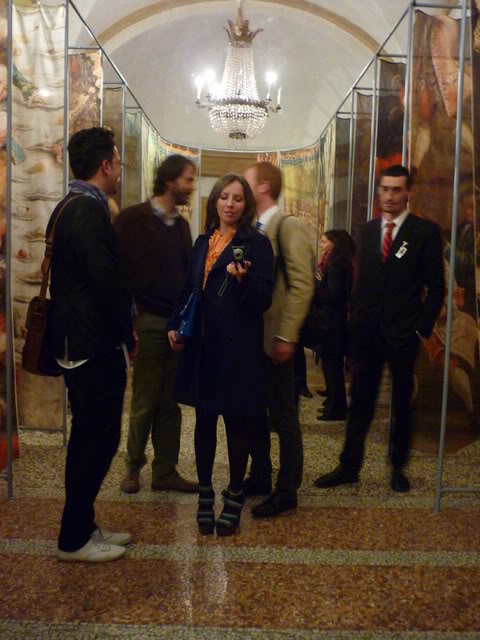
(Article published in the AJ 05.03.09)
The venues build the clothing brands as much as the models at London Fashion Week, writes Crystal Bennes
London Fashion Week, 20-25 February, various venues, London
London Fashion Week (LFW) celebrates its 25th anniversary this year, and while you may think that there’s not much of a connection between LFW and London’s architecture, you’d be mistaken. Catwalk shows in venues like the Royal Opera House, a carpark in Brewer Street and the Korean Embassy are a crucial part of the designers’ managing of their brands.
Since 2006, the home of LFW has been the Natural History Museum in Kensington, where the British Fashion Council (BFC) – the body that promotes British fashion designers – has its tent. While the white tents of LFW have not become as iconic as those of New York Fashion Week in Bryant Park, for fashion-forward Londoners they represent the glamorous lifestyle associated with the capital’s fashion industry.
Though designers don’t like to admit it, the recession has had an impact on the excesses of fashion week. This year saw only one tent on the lawns of the museum, as more and more designers are taking their pick of London’s buildings for use as runway stages. Showing outside of the BFC tent is not only more cost effective, it also allows the designer to appropriate a building to extend its brand image in a way not possible in the one-size-fits-all BFC tent.
Take two very different brands: Nicole Farhi and PPQ. Farhi has been in business for 27 years and is one of Britain’s most established designers. Her clothes are refined but playful, with an emphasis on tailoring in beautiful fabrics. PPQ on the other hand describe their look as ‘luxe pop-chic and underground London cool’ and are favoured by indie-pop stars. Neither brands showed at the BFC tent. Instead, Farhi showed at Edward Middleton Barry’s Royal Opera House, in the glass-domed Floral Hall (1860), and PPQ showed in the Samuel Ware-designed Burlington Arcade (1819).
Not only does the architectural stage serve as the backdrop for the runway spectacle, but the constraints of the space also dictate the fashion world’s strict hierarchy. At Farhi, the catwalk was arranged in a square, instead of the traditional long rectangle, with the biggest names in the fashion press on one side, buyers across from them, lesser press on the third side, with VIPs in the front row, on display as much as the models. PPQ’s venue provided its own constraints, both to the staging but also to the all-important industry hierarchy, when nearly everyone became front-row, given the arcade’s confined space.
The Farhi-Opera House partnership is a good fit as both brands identify with refinement, luxury and sophistication; it clearly works for Farhi, as she has shown there for the past four years.
PPQ-Burlington Arcade, however, is a marriage of practicality. After closing their Conduit Street store last year, the company will soon open a pop-up shop in the Burlington Arcade. While Amy Molyneaux, one of PPQ’s designers, said that a pop-up shop would allow more versatility than the fixed layout of their previous store, certainly a short-term lease in the Burlington Arcade is also less financially demanding than a four-storey Mayfair boutique.
To show or not to show: a question fashion designers may soon be asking themselves in these economically uncertain times – especially when a single catwalk show can cost up to £600,000. If these grand spaces are invisible in the catwalk snaps published in fashion magazines worldwide, why go to the trouble and expense of a major show? Buyers and editors could just as easily look at the collections online. This season, British designer Alice Temperley eschewed a costly runway show in favour of showing her latest collection via a digital installation at her shop, for example.
The numerous considerations involved in producing a show means that the decision to stage must be more about brand management than ease of use. As any fashion insider will tell you, the point of fashion week and its catwalks is spectacle. The celebrities, the unusual venues, the aura of exclusivity: if nothing else, these lavish circuses sell perfume to those who can’t afford the clothes but who still want a piece of the lifestyle associated with these fantastic spectacles. Build something grand enough and your building may serve as the backdrop for a future catwalk.




No comments:
Post a Comment